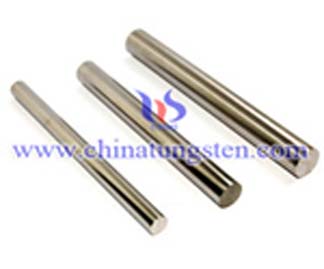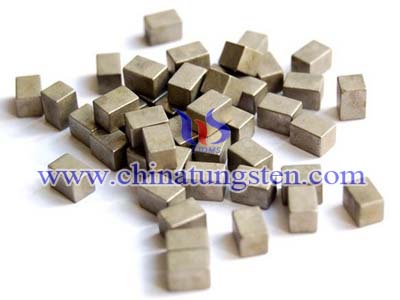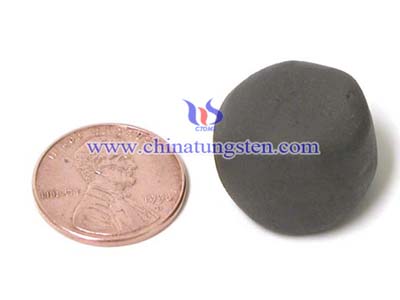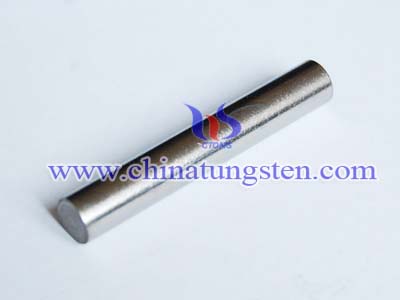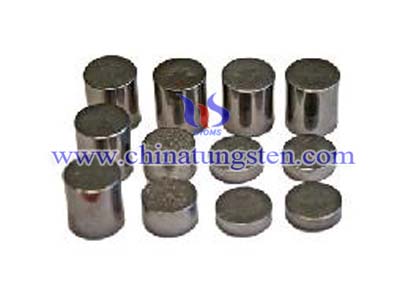Tungsten Alloy Bar
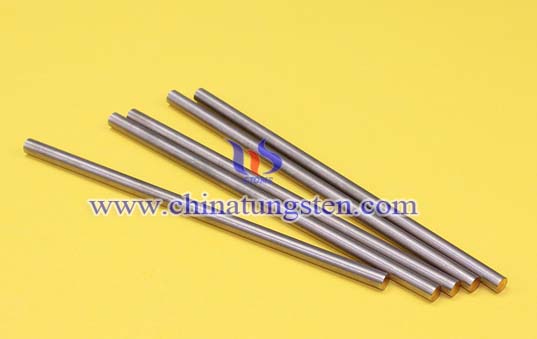
Tungsten alloy bar is made from tungsten alloy with the shape of round and square.Tungsten alloy boring bar is one important type of tungsten alloy bar.
In machining, boring process of tungsten alloy bar is enlarging a hole that has already been drilled or cast by means of a single-point cutting tool to achieve greater accuracy of the diameter of a hole such as in boring a cannon barrel. And it also can be used to cut a tapered hole.
There are various types of tungsten alloy boring bar. The tungsten alloy bar may be supported on both ends which only work if the existing hole is a through hole or it may be supported at one end. Line boring implies the former. Back boring is the process of reaching through an existing hole and then boring on the "back" side of the work piece.
Tungsten Alloy Advantages
Tungsten alloy are often used in making tungsten alloy bar because it has a higher density ranging from 16.5 to 18.5 about 50 percent higher than lead and much higher than lead .Tungsten alloy is easily machine, so that designers of tungsten alloy boring bar for instance can decide their favorable shape without worried about the property. Then tungsten alloy is less prone to chipping and breakage with good extensibility. In addition, tungsten alloy has high melting point, so in the high temperature, other metal starts melting while tungsten alloy keeps its property.
Tungsten Alloy bar Application
Typical Applications of tungsten alloy bar include weights and counterbalances for aircraft control surfaces and rotor blades, guidance platforms, counterbalances for fly wheels, turbines and engine crankshafts, vibration damping governors, filaments, and fuse masses,ingredient of kinds of heat-resistent steel and electrode, mainly used to guns, artillery, rockets, satellite, airplane and ship. Other applications include radiation shielding, gyro rotors, weapons including armor piercing applications, and high temperature tooling.
| Types of Alloy (%) | 90 W
6 Ni 4 Cu |
90 W 7 Ni 3 Fe |
92.5 W 5.25 Ni 2.25 Fe |
92.5 W Balance Ni, Fe, Mo |
93 W Balance Ni, Fe, Mo |
95 W 3.5 Ni 1.5 Cu |
95 W 3.5 Ni 1.5 Fe |
97 W 2.1 Ni 0.9 Fe |
| Typical Density (g/cc) | 17.1 | 17.1 | 17.5 | 17.6 | 17.7 | 18 | 18 | 18.5 |
| Typical Density (lbs/in3) | 0.614 | 0.614 | 0.632 | 0.636 | 0.639 | 0.65 | 0.65 | 0.688 |
| Typical Hardness RC | 24 | 25 | 26 | 30 | 32 | 27 | 27 | 28 |
| Minimum Tensile Strength(ksi) | 110,000 | 12,000 | 114.000 | 120,000 | 125,000 | 110,000 | 120,000 | 123,000 |
| 0.2% Minimum Anti-Diopter (ksi) | 80,000 | 88,000 | 84,000 | 90,000 | 95,000 | 85,000 | 90,000 | 85,000 |
| Minimum% Elongation (1" gage length) | 6 | 10 | 7 | 4 | 4 | 7 | 7 | 5 |
| The Proportion of the Elastic Limit (PSI) | 45,000 | 52,000 | 46,000 | 55,000 | 60,000 | 45,000 | 44,000 | 45,000 |
| Modulus of Elasticity (x106psi) | 40 x 106 | 45 x 106 | 47 x 106 | 52 x 106 | 53 x 106 | 45 x 106 | 50 x 106 | 53 x 106 |
| Coefficient of Thermal Expansion x10-6/0C (20-400C) | 5.4 | 4.61 | 4.62 | 4.5 | 4.5 | 4.43 | 4.6 | 4.5 |
| Thermal Conductivity (CGS Units) | 0.23 | 0.18 | 0.2 | 0.27 | 0.27 | 0.33 | 0.26 | 0.3 |
| Conductive (% IACS) | 14 | 10 | 13 | 14 | 14 | 16 | 13 | 17 |
We carry a full line of standard bars and can custom build bars to your specifications. All bars have smooth faces and rounded edges and corners for ease and safety in handling.

